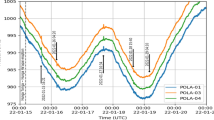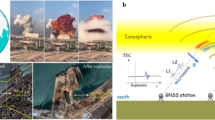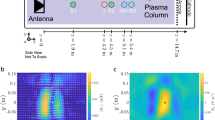Abstract
FOLLOWING the high-altitude nuclear detonation on July 9 at Johnston Island there was observed a pronounced effect on the 10.006-Mc riometer data taken at the Air Force Cambridge Research Laboratories, Sagamore Hill Radio Observatory, in Hamilton, Massachusetts (lat. 42° 38′, long. 70° 49′). This riometer consisted of a Collins R–390A–URR receiver with a band-width of 1 kilocycle, and a dipole antenna oriented in an east–west direction.
This is a preview of subscription content, access via your institution
Access options
Subscribe to this journal
Receive 51 print issues and online access
$199.00 per year
only $3.90 per issue
Buy this article
- Purchase on Springer Link
- Instant access to full article PDF
Prices may be subject to local taxes which are calculated during checkout
Similar content being viewed by others
References
Crain, C. M., and Tamarkin, P., J. Geophys. Res., 66, 35 (1961).
Author information
Authors and Affiliations
Rights and permissions
About this article
Cite this article
STRAKA, R., ELKINS, P. & STRICK, H. Decametric Wave-length Absorption resulting from the Nuclear Detonation of July 9, 1962. Nature 196, 156–157 (1962). https://doi.org/10.1038/196156a0
Issue Date:
DOI: https://doi.org/10.1038/196156a0
Comments
By submitting a comment you agree to abide by our Terms and Community Guidelines. If you find something abusive or that does not comply with our terms or guidelines please flag it as inappropriate.



